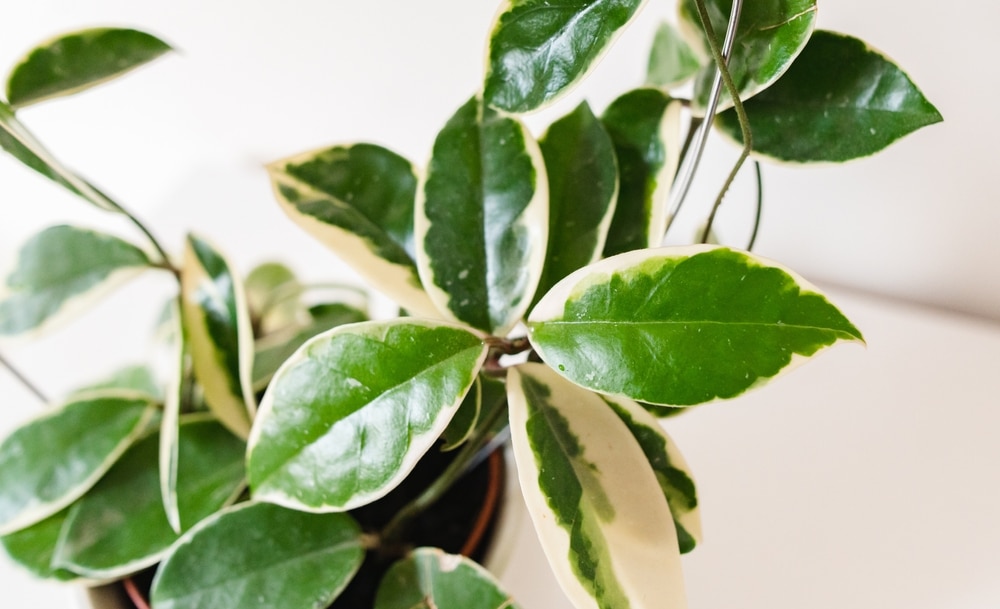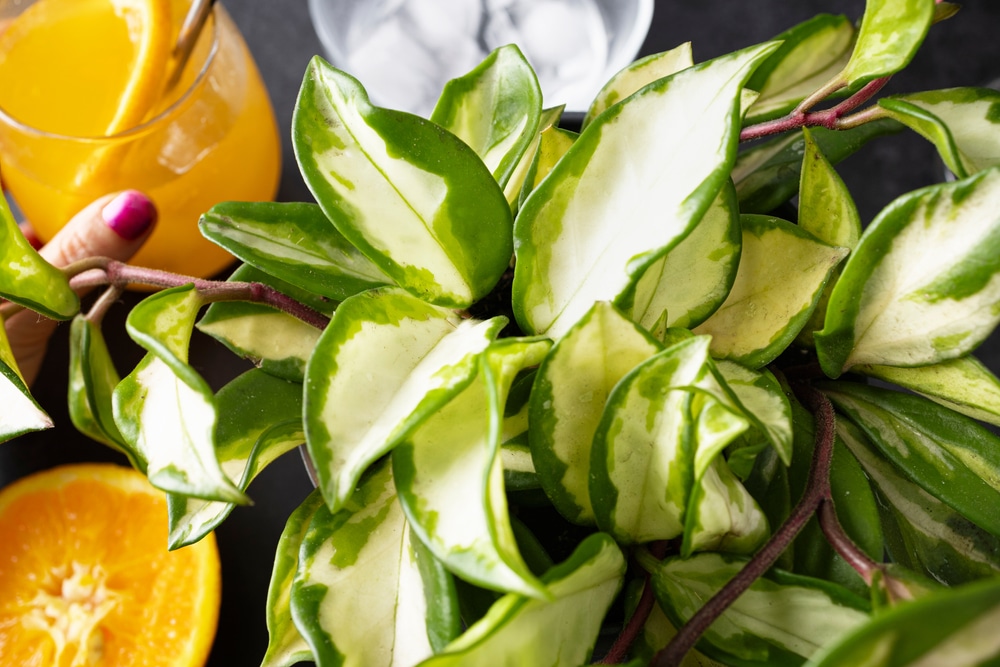If you’d like to expand your collection of houseplants, the Hoya tricolor and krimson queen are likely to top your list. While they appear similar, these houseplants have numerous distinctions. Let’s compare Hoya Tricolor vs. Krimson Queen.
Hoya Tricolor vs. Krimson Queen: How Do Looks Compare?

Even though these two Hoyas share a few modest similarities, they have several distinguishing appearance variances. Let’s compare their foliage, flowering, size, and growth differences.
Foliage
The Hoya tricolor is distinguishable by its thick, waxy leaves and brilliant pink, white, and green hues. Like most other Hoya plants, the Hoya tricolor has creamy variegation that extends from the leaf’s middle to its margins.
On the other hand, krimson queen has lovely leaves due to its distinctive variegation. Like the tricolor, it’s available in creamy-white, pink, and green shades. Every leaf is cordate in form. When touched, it has a waxy texture. These leaves link to a hanging vine.
Flowering
The Hoya tricolor typically blooms from spring to early summer because this is the ideal season for floral development. These blooms appear in clusters of 10-30 and are delicate, star-shaped, and covered in microscopic hairs, giving them a fuzzy look. Its hues range from pink to off-white.
As the krimson queen still falls under the Hoya category, they’ll also flower mostly between early spring and summer. However, most younger plants won’t bloom till they mature; typically, after three to four years.
The blooms come in clusters of around 30 star-shaped flowers. They have a pinkish hue that the red center highlights.
Size and Growth
Hoya tricolor plants develop relatively rapidly. Every broad leaf could reach a width of three inches and a thickness of 0.8 inches. The length of Hoya carnosa in the open could reach a stunning 20 feet.
Nonetheless, in an indoor environment, the span of the vines cannot exceed 6 feet, and the plant can only reach a height of 2-3 meters.
The krimson queen, on the other hand, has a relatively slow growth rate. Often, you’ll need to wait two to three years before repotting your plant.
Once matured, the plant can grow to a maximum height of 1.5 to 2 meters. This length is attainable, thanks to the trailing tendrils extending to 11-20 inches.
What Hardiness Zones Are Best for Your Plant?
Understanding the ideal temperature for your houseplants is essential for maintaining their health. Here’s how these hoya species compare:
Typically, the Hoya tricolor temperature ranges between 70 and 80 °F (21-26°C). They tolerate high temperatures and flourish in USDA hardiness zones 11-12. Avoid temperatures under 50°F, as they could be harmful to the plant.
Likewise, the krimson queen has a limited temperature tolerance range. Extremely low or high temperatures can result in stress, causing damage to your plant. It’s recommended to keep your plant’s temperature range between 60°F and 90°F (16-32°C). This environment is prevalent in USDA hardiness zones 10 to 12.
How To Care for Each Plant

While the Hoya tricolor and krimson queen could be similar in numerous aspects, each plant has some unique care requirements.
Here’s how they compare in regards to light, watering, humidity, soil, fertilizer, potting & repotting, and pruning needs.
Light
The light requirements for Hoya tricolor range from strong indirect light to a little direct sunlight. Just ensure the plant’s sensitive foliage doesn’t get damaged. Similarly, krimson queen thrives in bright, filtered light as it often grows under canopies.
Watering
As an epiphyte, less is better when watering your Hoya, regardless of the type. Ideally, water once every two weeks or if you notice the soil is dry. However, you’ll need to adjust your watering according to the current season.
Soil
Hoya plants love organic-rich, well-draining soil. Also, maintain the soil moderate to slightly acidic (6-6.1).
Humidity
The perfect humidity level for Hoya tricolor is about 40-60%. On the other hand, the krimson queen requires slightly humid conditions, not falling below 60%.
Fertilizer
Apply fertilizer once every fortnight. Also, ensure that it’s diluted enough to avoid overwhelming your plant.
Pruning
For Hoya plants, pruning once yearly is okay. However, you might need to prune more frequently if you notice your plant’s leaves falling off or turning yellowish.
Potting & Repotting
Ideally, you should repot your Hoya plants in early spring through to early summer. Before repotting, observe if the plant’s growth has ceased and roots are visible at its base. Also, select a container double the size of the previous one with adequate drainage.
There are many other varieties of Hoya including the Hoya Krimson Princess.
